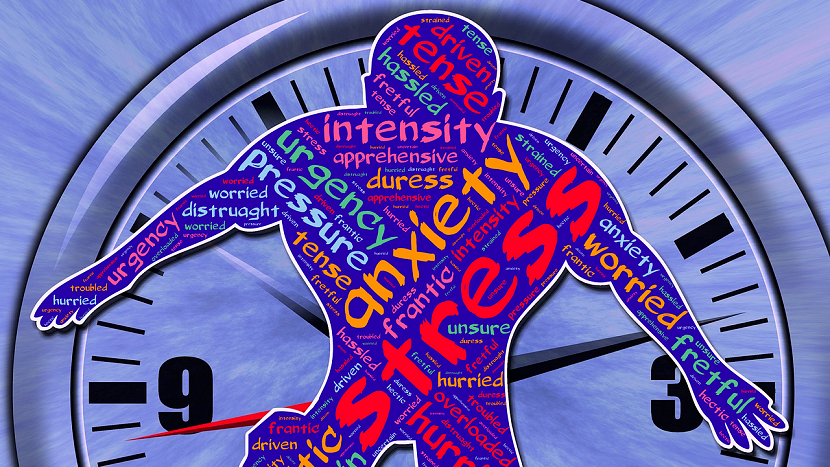
Worried about how to meet a deadline? Most people feel a little anxious and fearful occassionaly. Anxiety is the body’s natural response to stress. It’s a feeling of fear or apprehension. But, if your feelings of anxiety are extreme, are interfering with your life and last longer than six months, you may have an anxiety disorder. An anxiety disorder is characterized by a general feeling of excessive fear and can be debilitating. If left untreated, anxiety levels keep getting worse. Anxiety so frequently co-occurs with depression that the two are perceived as twin faces of one disorder, even though they are not.
Depression is essentially one single illness with different symptoms. Some symptoms of depression include feeling sad and hopeless, changes in appetite, sleep-related problems, increased fatigue, feelings of worthlessness, difficulty in making decisions, thoughts of death or suicide. It, too, tends to worsen until correctly diagnosed and treated. But the core symptoms of depression are having a low mood and/or a loss of interest and enjoyment in most day to day activities. This state could last for two weeks or longer. Depression encompasses a rather brooding thought cycle and negative self-defeating internal self-conversation which is extremely difficult to break free from.
In depression, a person tends to get trapped in a vicious circle. Negative and self-deprecating thoughts steeped in shame, guilt and ultimately self-defeat spiral out of control and drag the person even deeper down the hole.
Numerous biological, psychological and environmental factors contribute to the development and progression of mental disorders. Most of them are the end result of a combination of several different factors rather than just a single factor. There are certain chemical changes that occur in the brain that are related to these disorders and more often than not entail physical manifestations. Depression and anxiety can be triggered by by traumatic events, such as abuse, the death of a loved one or chronic physical illness.
Some of the types of anxiety disorders are mentioned below:
Generalized anxiety disorder: This is characterised by persistent, excessive and unrealistic worrying about everyday things without there being one obvious logical cause for it. Generalised anxiety disorder centres on two core symptoms - excessive anxiety and excessive worry. In GAD, a person finds it difficult to control these feelings of anxiety.
Panic disorders: A panic attack is essentially characterised by an abrupt onset of intense fear or discomfort that pinnacles very quickly within a short span of time. The symptoms include sweating, palpitations, shortness of breath, chest pain or discomfort, nausea or abdominal distress and fear of losing control.
Social anxiety disorder: A chronic mental health condition wherein social interactions cause irrational anxiety. Some of the most common symptoms experienced by people with social anxiety disorder are blushing, excessive sweating, nervousness, dry throat and mouth, trembling, muscle twitching, rapid heartbeat, nausea and other abdominal distress.
Phobias: A type of anxiety disorder, distinctive of a persistent and excessive fear of a particular object, a living creature ora specific situation. The symptoms may include sweating, chest pains and pins and needles.Phobias can lead to panic attacks. The fear of: spiders, water, flying, heights, snakes, elevators etc. are some of the common prevalent phobias.
Obsessive compulsive disorder (OCD): A disorder determined by repetitive, intrusive thoughts that trigger related compulsive actions and behaviour, routines and rituals performed repeatedly. These behaviours are performed to alleviate the anxiety associated with obsessive thoughts. Some symptoms include compulsive behaviour, agitation, compulsive hoarding, impulsivity, meaningless repetition of own words, repetitive movements, ritualistic behaviour and social isolation.
Post-traumatic stress disorder (PTSD): A disorder characterized by failure to recover after directly experiencing or witnessing a petrifying traumatic incident, in person. For instance, soldiers experience PTSD, survivors of 9/11 in the USA suffered PTSD. Symptoms include irritable or aggressive behavior patterns, reckless or self-destructive behavior, exaggerated startle response, concentration issues and sleep-related problems.
It is important to note that the symptoms vary from person to person and so does the intensity. Also, diagnosis of anxiety or depression cannot be ascertained with the existence of just one symptom. For an accurate diagnosis to be made, aclusterof4-5 symptoms need to be prevalent over a period of 3-4 weeks.
The most commonly used treatments of these disorders include:
Cognitive Behaviour Therapy (CBT) which is essentially a talking therapy that helps to manage problems and issues by skilfully changing the way of thinking and behaviour. Its methodology includes the identification and transformation of distorted beliefs and negative thought patterns into more empowering, realistic and positive ones. Since negative thoughts and feelings can entrap an individual in a vicious cycle, CBT teaches healthy coping skills and behaviours. When people change the perception of themselves, their reaction simultaneously undergoes a sea change and they begin to view the world around them in a more positive manner.
Medications: Prescribed medicines help with the chemical balance in the brain to alleviate some of the symptoms. Medication is most effective when healthy lifestyle changes are made. Even though medication can help relieve the symptoms of depression, it may not be suitable for long-term use.
Alternative therapies: Mindfulness approaches include relaxation therapy and meditation which are just as effective as medication, often even more so, without any side effects.
It is important to remember that one does not need to isolate themselves when suffering from depression. Professional help can be easily sought. It is also imperative for family and friends to be supportive and educate themselves and be well informed on how to deal with people suffering from anxiety and depression. The reason for delayed treatment can take place if family members believe that the person suffering is intentionally behaving in this manner or is engaging in attention-seeking tactics. But that may not be the case. The symptoms of depression are expressed through feelings and behaviour and should be identified and taken seriously so that timely and appropriate course of action can be taken.
(The writer is founder and CEO, Breaking Barrier. Views expressed are personal)